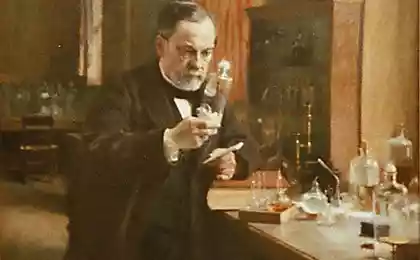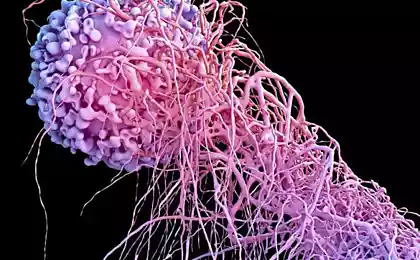787
Mad science experiments (13 photos)
Science is beautiful when it comes to laser beams or space missions, but some scientific experiments look like complete madness:
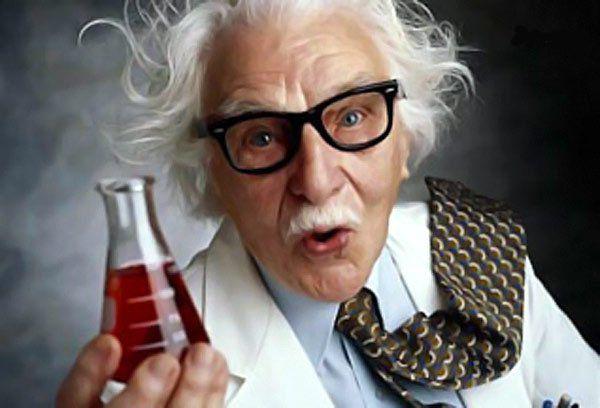
orgone energy

The psychoanalyst and follower of Sigmund Freud, Wilhelm Reich coined the "theory of orgone" in the 30-ies. He believed that the "orgone energy" (life energy or the energy of the cosmos) is the basis of Freud's concept of libido and called it orgonomiey. In 1940 he tried to accumulate orgone in the so-called "orgone accumulators", to use this power to fight cancer. It is not surprising that his dubious assumptions have not been confirmed, and he went to jail when trying to smuggle abroad his "orgone device».
Elephant junkie necessarily
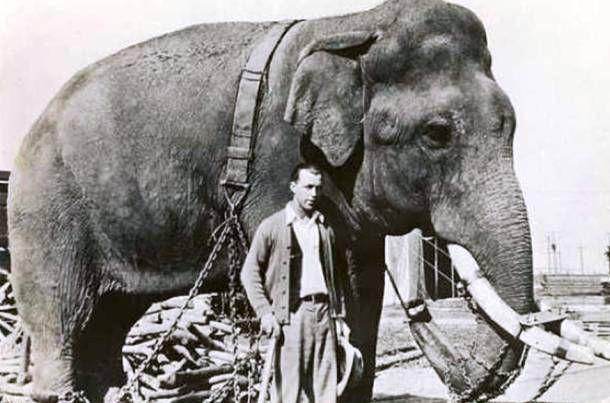
Investigation of the behavior of elephants resulted in the most cruel experiments in the name of science. Warren Thomas introduced the elephant named Truk 297 milligrams of LSD in 3000 times the dose that is capable of supporting a person. The experiment was conducted in the Lincoln Park Zoo in Oklahoma in 1962, it was to determine whether it can cause temporary insanity have periodically experiencing bouts of aggression males. An hour later, he died from Truk.
The two-headed dog
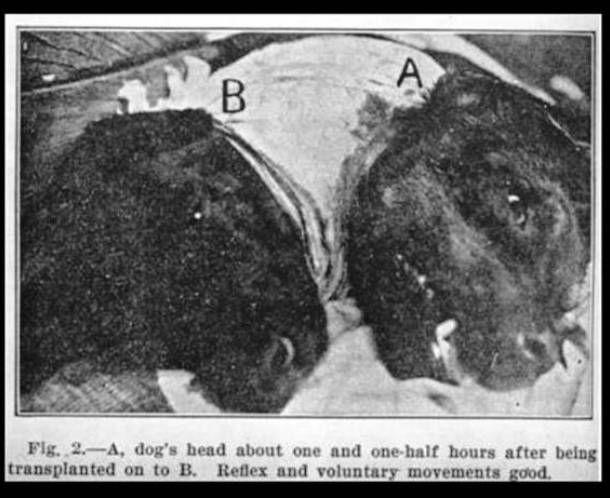
American physiologist Charles Guthrie made a significant contribution to science and even collaborated with the French doctor Alexis Carrel, in 1912 received the Nobel Prize in physiology for his work on vascular surgery. Guthrie also nominated for the award, but he refused, probably because of the experiments on transplants. He sewed the dog a second head. Surprisingly, his experiments have even had some success: severed heads managed to keep alive artificially during the transplant.
Dogs Frankenstein
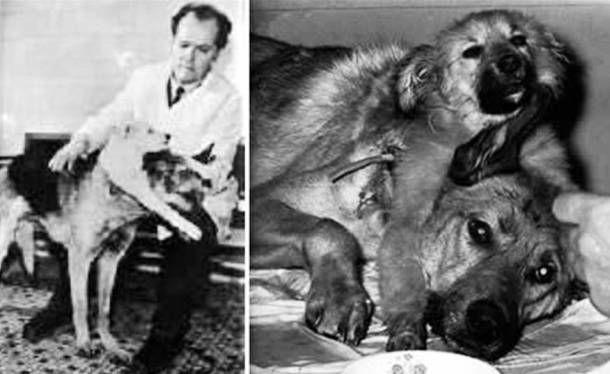
Vladimir Demihov - another scientist obsessed transplantation. He is widely known as the founder of a heart transplant. As Charles Guthrie, with varying success, Vladimir carried out his experiments on animals and dogs in particular.
Puncture with a mammoth
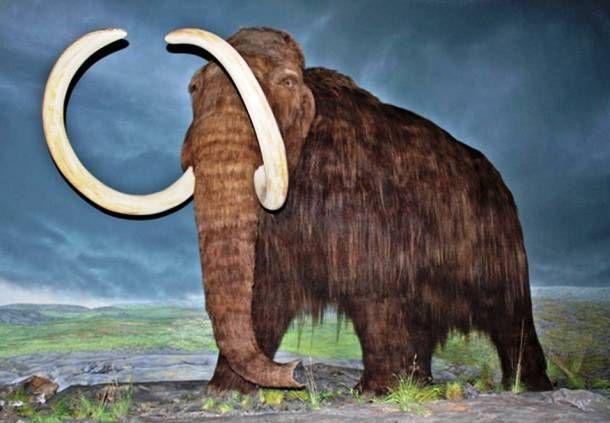
Korean veterinarian, researcher and professor of biotechnology and teriogenologii Huang Woo-suk periodically made obvious advances in stem cell research and its findings published in the most famous magazines. However, all this was forgotten when he was accused of embezzlement and violation of bioethics. He spent more than a half-million dollar donations to unsuccessful attempts to clone a mammoth.
Dr. drinking vomiting patients, to prove infectious origin of the disease

American doctor Stubbins Fiers known for his unusual research the causes of yellow fever. He was so sure that this is non-infectious disease that tested their own hypothesis on myself. His experiments included accommodation in the most dangerous conditions for infection to disease is likely to pick up. Some of his detention subsequently proved to be correct, but the explanation was not good anywhere. Shortly after his death, the Cuban scientist Carlos Finlay discovered communicate with insects yellow fever.
Man Cyborg
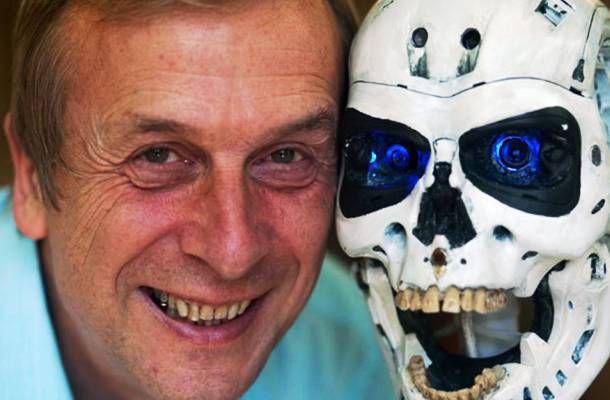
British scientist and professor at the University of Reading cybernetics Kevin Warwick in the UK is known for its research in the field of robotics. He also runs one of the world's most advanced cyborg research, and practically is the first cyborg in the history of mankind. Through chips and electrodes implanted in his body, he was able to control its robotic arm using the power of thought.
Therapy against nail biting

A researcher from Virginia Lawrence evil gentry held a quiz to test whether subliminal messaging rid of bad habits such as nail biting. During the experiment, he was standing in the room where slept a group of boys, and often repeated the words, "my nails terribly bitter." He wanted to see if he could thus wean the boys biting his nails. It would seem that the experiment worked, because 40 percent of the study got rid of this habit, but at the same time, there were some questions, such as whether the boys were sleeping?
Homunculus
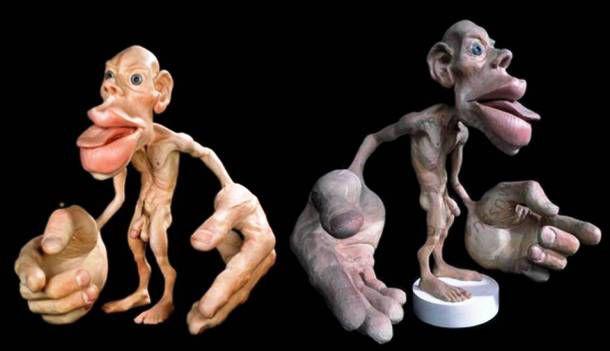
Paracelsus - physician and alchemist who lived in the XV century. He is known for his early work in the field of toxicology and psychotherapy. He was also the first to use the term "unconscious" in the clinical sense. However, the most bizarre of his work - is the creation of a homunculus (a miniature person). Presumably, to create one human egg is transplanted into the uterus of a horse, and the horse fed on human blood. Of course, no evidence of the success of these experiments there.
The revival of the dead
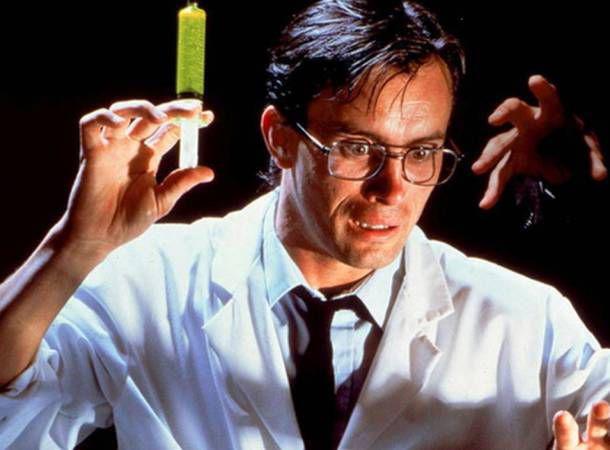
A child prodigy from the University of California at Berkeley, Robert E. Cornish graduated with honors at age 18, and 22 doctorate. He became interested in the idea of the return of the dead to life. In 1930, the Cornish tried to revive the animal, namely a few fox terriers. He swayed their bodies to swing to simulate blood circulation and at the same time they introduced adrenalin and anticoagulants. Those animals that did back to life for a few moments, observed blindness and brain damage very quickly, they died again. But even that he was never able to repeat with the man.
Weight soul
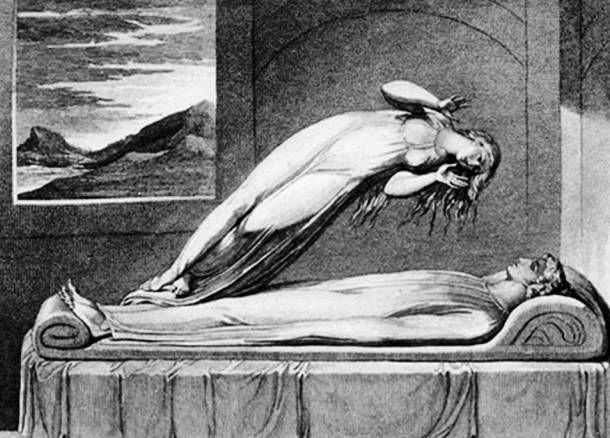
American doctor Duncan MacDougall in the early 20s put forward the theory that the soul weighs. He assured that can measure the mass which a person loses when the soul flies away. During his experiments, he weighed six patients before and after death, and it turned out that the soul weighs 21 grams. Needless to say, his conclusion never been recognized in the scientific community.
Pierced his own heart
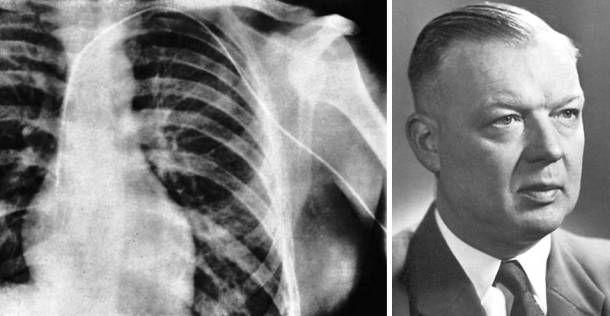
1929 German surgeon Werner Theodor Otto Forsman was still a trainee, but it became famous thanks to the experiment, which is held over himself. Quite independently, he injected himself and a local anesthetic through a vein in the arm catheter introduced himself in the heart. He has done this procedure without any help. After that stunt he was fired. However, in 1956, Forsman won the Nobel Prize in Medicine for their discoveries concerning heart catheterization.

orgone energy

The psychoanalyst and follower of Sigmund Freud, Wilhelm Reich coined the "theory of orgone" in the 30-ies. He believed that the "orgone energy" (life energy or the energy of the cosmos) is the basis of Freud's concept of libido and called it orgonomiey. In 1940 he tried to accumulate orgone in the so-called "orgone accumulators", to use this power to fight cancer. It is not surprising that his dubious assumptions have not been confirmed, and he went to jail when trying to smuggle abroad his "orgone device».
Elephant junkie necessarily

Investigation of the behavior of elephants resulted in the most cruel experiments in the name of science. Warren Thomas introduced the elephant named Truk 297 milligrams of LSD in 3000 times the dose that is capable of supporting a person. The experiment was conducted in the Lincoln Park Zoo in Oklahoma in 1962, it was to determine whether it can cause temporary insanity have periodically experiencing bouts of aggression males. An hour later, he died from Truk.
The two-headed dog

American physiologist Charles Guthrie made a significant contribution to science and even collaborated with the French doctor Alexis Carrel, in 1912 received the Nobel Prize in physiology for his work on vascular surgery. Guthrie also nominated for the award, but he refused, probably because of the experiments on transplants. He sewed the dog a second head. Surprisingly, his experiments have even had some success: severed heads managed to keep alive artificially during the transplant.
Dogs Frankenstein

Vladimir Demihov - another scientist obsessed transplantation. He is widely known as the founder of a heart transplant. As Charles Guthrie, with varying success, Vladimir carried out his experiments on animals and dogs in particular.
Puncture with a mammoth

Korean veterinarian, researcher and professor of biotechnology and teriogenologii Huang Woo-suk periodically made obvious advances in stem cell research and its findings published in the most famous magazines. However, all this was forgotten when he was accused of embezzlement and violation of bioethics. He spent more than a half-million dollar donations to unsuccessful attempts to clone a mammoth.
Dr. drinking vomiting patients, to prove infectious origin of the disease

American doctor Stubbins Fiers known for his unusual research the causes of yellow fever. He was so sure that this is non-infectious disease that tested their own hypothesis on myself. His experiments included accommodation in the most dangerous conditions for infection to disease is likely to pick up. Some of his detention subsequently proved to be correct, but the explanation was not good anywhere. Shortly after his death, the Cuban scientist Carlos Finlay discovered communicate with insects yellow fever.
Man Cyborg

British scientist and professor at the University of Reading cybernetics Kevin Warwick in the UK is known for its research in the field of robotics. He also runs one of the world's most advanced cyborg research, and practically is the first cyborg in the history of mankind. Through chips and electrodes implanted in his body, he was able to control its robotic arm using the power of thought.
Therapy against nail biting

A researcher from Virginia Lawrence evil gentry held a quiz to test whether subliminal messaging rid of bad habits such as nail biting. During the experiment, he was standing in the room where slept a group of boys, and often repeated the words, "my nails terribly bitter." He wanted to see if he could thus wean the boys biting his nails. It would seem that the experiment worked, because 40 percent of the study got rid of this habit, but at the same time, there were some questions, such as whether the boys were sleeping?
Homunculus

Paracelsus - physician and alchemist who lived in the XV century. He is known for his early work in the field of toxicology and psychotherapy. He was also the first to use the term "unconscious" in the clinical sense. However, the most bizarre of his work - is the creation of a homunculus (a miniature person). Presumably, to create one human egg is transplanted into the uterus of a horse, and the horse fed on human blood. Of course, no evidence of the success of these experiments there.
The revival of the dead

A child prodigy from the University of California at Berkeley, Robert E. Cornish graduated with honors at age 18, and 22 doctorate. He became interested in the idea of the return of the dead to life. In 1930, the Cornish tried to revive the animal, namely a few fox terriers. He swayed their bodies to swing to simulate blood circulation and at the same time they introduced adrenalin and anticoagulants. Those animals that did back to life for a few moments, observed blindness and brain damage very quickly, they died again. But even that he was never able to repeat with the man.
Weight soul

American doctor Duncan MacDougall in the early 20s put forward the theory that the soul weighs. He assured that can measure the mass which a person loses when the soul flies away. During his experiments, he weighed six patients before and after death, and it turned out that the soul weighs 21 grams. Needless to say, his conclusion never been recognized in the scientific community.
Pierced his own heart

1929 German surgeon Werner Theodor Otto Forsman was still a trainee, but it became famous thanks to the experiment, which is held over himself. Quite independently, he injected himself and a local anesthetic through a vein in the arm catheter introduced himself in the heart. He has done this procedure without any help. After that stunt he was fired. However, in 1956, Forsman won the Nobel Prize in Medicine for their discoveries concerning heart catheterization.



